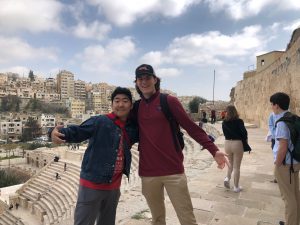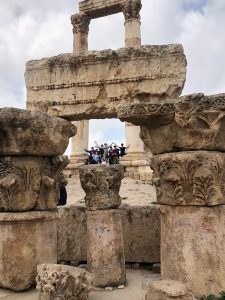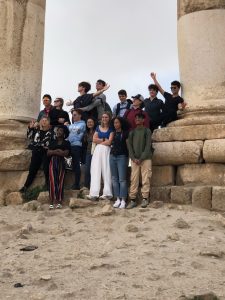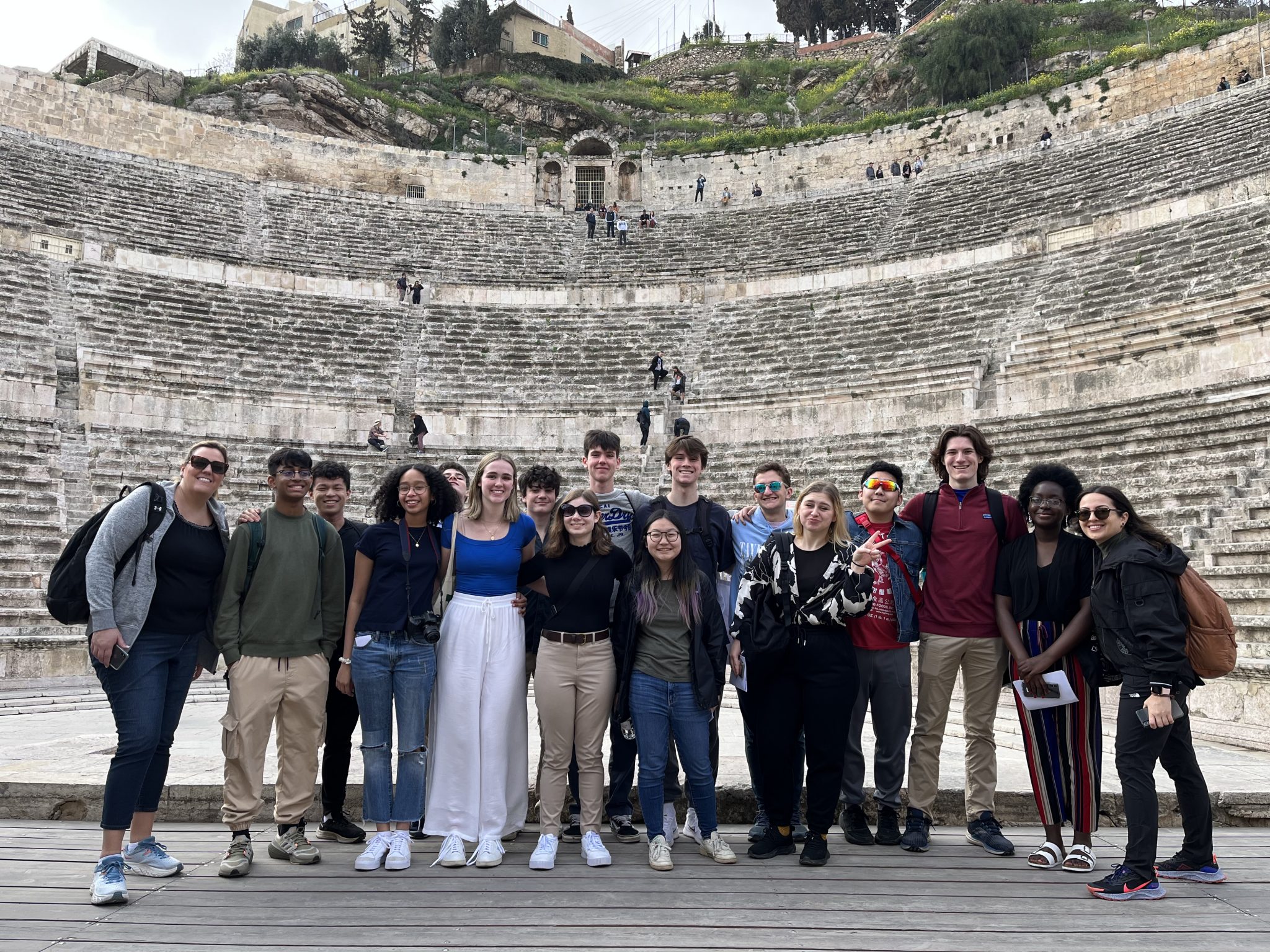Justin Seo ’23 and Emma Sudo ’23, describe a busy day exploring downtown Amman.
From Falafels to Amphitheaters: The Quest for Immortality
The simplest acts in life are oftentimes the most enjoyable. Whether it is eating food, having conversations with other people, or collectively sleeping on the bus after a long day, these are all windows for introspection and shared memories to create long-lasting memories and perhaps a springboard to friendship.
The night of our arrival at King’s Academy was marked by tranquil serenity. The crisp nighttime air and the soft breezes that rustled the olive tree leaves ever so gently, catalyzing our reinvigoration in what literally was a second wind. No longer feeling tired, I wandered their campus in the dark, silently contemplating what life as a King’s Academy student would be like while absorbing in the beautiful open-air, Jordanian architecture of the campus.
The next day started early for me. Waking up early to go to the gym, I got sidetracked and instead got some work done, before settling in and reading the excellent book Nature’s Metropolis by William Cronon. In a blink of an eye, it was time to board the bus to head to Al-Balad in downtown Amman. At dinner the previous evening, I started to have an inkling of the sentiment that if I could eat the food served in Jordan, I could easily go vegetarian. Breakfast only reinforced that feeling. The bread combined with hummus, a fava bean paste called foul, and freshly-made falafels got me more than ready for the day of exploration, contemplation, and introspection.
As an aspiring classicist, I’ve read about and seen multiple works of the Ancient Romans and Greeks. While the intangible legacies of their civilizations are probably most closely felt in its descendants of modern Western legal codes, Romance languages, political systems and more, the physical ruins that they have left behind remain a tangible and still interactable piece of their legacy. The Roman Theatre of Amman, built in honor of Emperor Antonius Pius, stands as a monolith to the legacy of not just the Roman empire in Jordan, but also of sublime cultural influences of the Greeks within the wider Roman empire and especially the eastern provinces. Climbing up to the top of the amphitheater, we could see the rolling hills of the city of Amman, yellow-brown traditional buildings dotting the landscape, with glass skyscrapers looming in the horizon, a blend of the old and the new. Unlike the Forum in Rome, there are no “Do not touch” signs segregating us from the people of the past. Here in Amman, we stood exactly where thousands of Ammonite (or in Hellenic and Roman days Philadelphians) theatre-goers would have stood, sat where they would have sat, and for some of us, recited lines of Sophocles where actors of antiquity might’ve done the exact same. Sitting at the top and marveling at the city down below, I found my hands gripping the side of the stone seats, fingers finding themselves in grooves that perhaps naively romantically, I imagine residents of the city have laid their hands in. Sitting and contemplating, I remember that the Amphitheatre is still used for artistic purposes. Even now, concerts and other performances are still held there. I was marveled by not just the resilience of Roman engineering, but of the living history that we were so fortunate to be able to take part in.

-Justin Seo ’23
I was most excited to visit Amman because we planned to eat at two of the most famous restaurants in Jordan. We started the day at Hashem Restaurant, a local eatery popularized when King Abdullah II visited during Ramadan 2006. The falafel, fūl, and hummus we shared in small groups supported TripAdvisor’s claim, “If you haven’t tasted Hashem Down-town you haven’t been to Jordan.” For dessert, we headed to Habibah Sweets, most famous for knafeh, which combines sweet cheese with a spun pastry called kataifi. Both restaurants were established in the 1950s, so their patrons belong to several generations.
To walk off the food, we proceeded to the Roman Amphitheater. This theater was built in the second century when Jordan was under the control of the Roman Empire. Fortunately, the theater is oriented north, keeping us cool under the intense sun. However, the shade did not hide the steep steps, which forced me out of my comfort zone. Next, we visited the Amman Citadel, a historical area of Amman that has been the home of several cultures that heavily influenced each other. For example, the Umayyads, who took control of the Citadel from the Byzantine Empire in the seventh century, built a palace in the shape of the Byzantine Orthodox cross. We learned that since ancient times, inhabitants of the Citadel had to create innovations to conserve the small amount of rain that Jordan receives each year. After walking around in the heat, we were treated with much-needed fruit smoothies from the Wild Jordan Center, owned by the Royal Society for the Conservation of Nature. Attached to the cafe is a shop filled with goods produced by rural communities in reserves that the society protects.
Once we got our first taste of shopping in Jordan, we were ready to take on Rainbow Street. While buying items like traditional scarves, trendy t-shirts, and handmade gifts, we interacted with locals to get an insider’s view of Jordanian culture. Something I learned while interacting with Jordanian shopkeepers was the intense connection between Jordanians and the environment. There is an expectation to preserve the environment (especially given Jordan’s history of being water-scarce) and an equally important acknowledgment of the environment’s role in nourishing the body (Dead Sea minerals!). We ended the night by eating mansaf, Jordan’s national dish, at Ms. Samawi’s house and learning dabke, a Levantine circular dance that necessitates an unspoken connection between the dancers through rhythm. I am amazed by how many parts of Jordan’s culture we explored in just one day.
-Emma Sudo ’23



